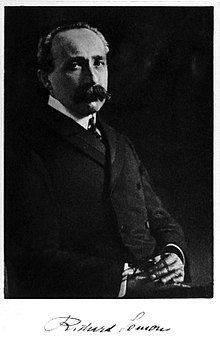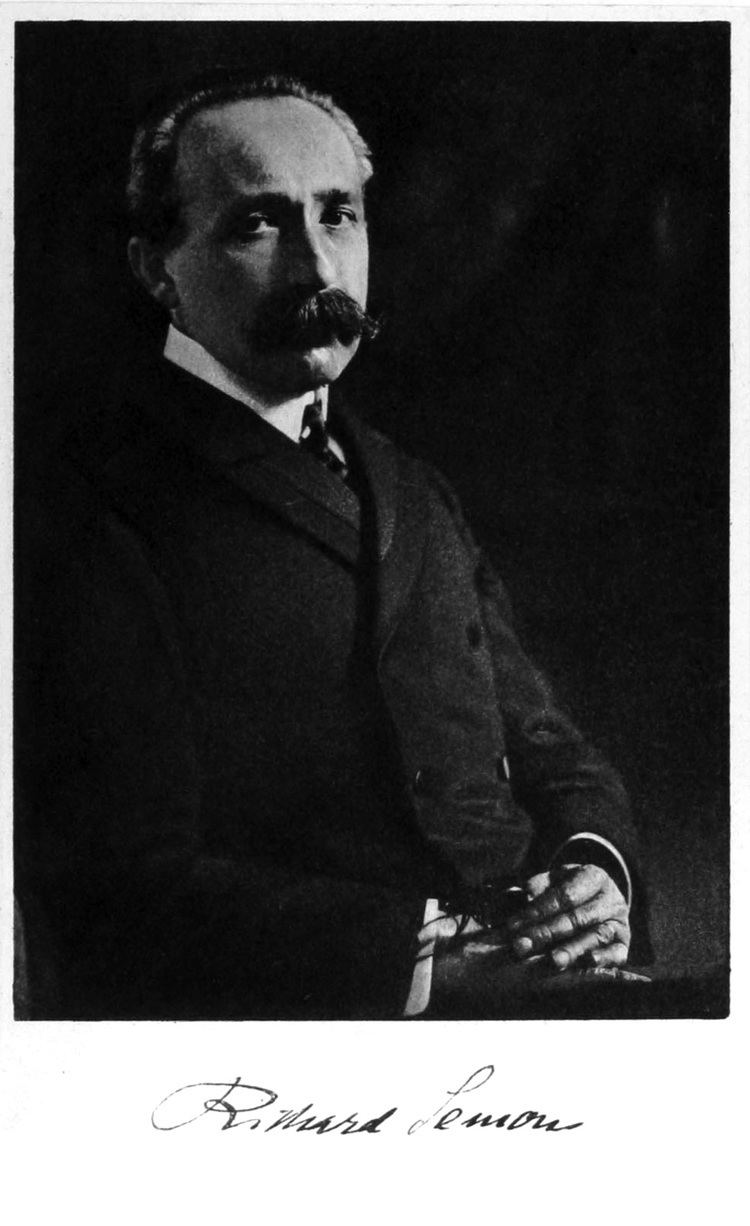Name Richard Semon | ||
 | ||
Books In the Australian bush and on the coast of the Coral Sea | ||
Richard Wolfgang Semon (22 August 1859, Berlin – 27 December 1918, Munich) was a German zoologist and evolutionary biologist, a memory researcher who believed in the inheritance of acquired characters and applied this to social evolution.
Contents

Thesis
Semon proposed psycho-physiological parallelism according to which every psychological state corresponds to alterations in the nerves. His ideas of the mneme (based on the Greek goddess, Mneme, the muse of memory) were developed early in the 20th century. The mneme represented the memory of an external-to-internal experience. The resulting "mnemic trace" (or "engram") would be revived when an element resembling a component of the original complex of stimuli was encountered. Semon’s mnemic principle was based upon how stimuli produce a "permanent record,... written or engraved on the irritable substance," i.e. upon cellular material energistically predisposed to such inscription (Semon 1921, p. 24). According to historian Petteri Pietikainen:
Semon argued not only that information is encoded into memory and that there are 'memory traces' (engrams) or after-effects of stimulation that conserve the changes in the nervous system, he also contended that these changes in the brain (that is, engrams) are inherited. Semon's mneme-theory fell into disrepute largely because in a Lamarckian fashion it proposed that memory units are passed from one generation to another.
Semon was a proponent of the theory of organic memory, which was popular amongst biologists and psychologists from 1870 to 1918. The theory later lost scientific legitimacy as it yielded no reliable data and advances in genetics made the theory untenable.
Evidence
Semon found evidence in the way that different parts of the body relate to each other involuntarily, such as "reflex spasms, co-movements, sensory radiations," to infer distribution of "engraphic influence." He also took inventive recourse to phonography, the "mneme machine," to explain the uneven distribution and revival of engrams.
Semon's book Die Mneme directly influenced the Mnemosyne project of the idiosyncratic art historian Aby Warburg.
Mneme should not be confused with meme, a separate concept coined by Richard Dawkins.
Death
In 1918 in Munich, shortly after the end of World War I, Semon committed suicide wrapped in a German flag allegedly because he was depressed by Germany's rôle and defeat in that war and by the death of his wife.
Legacy
Semon is commemorated in the scientific name of a species of green-blooded skink, Prasinohaema semoni.
